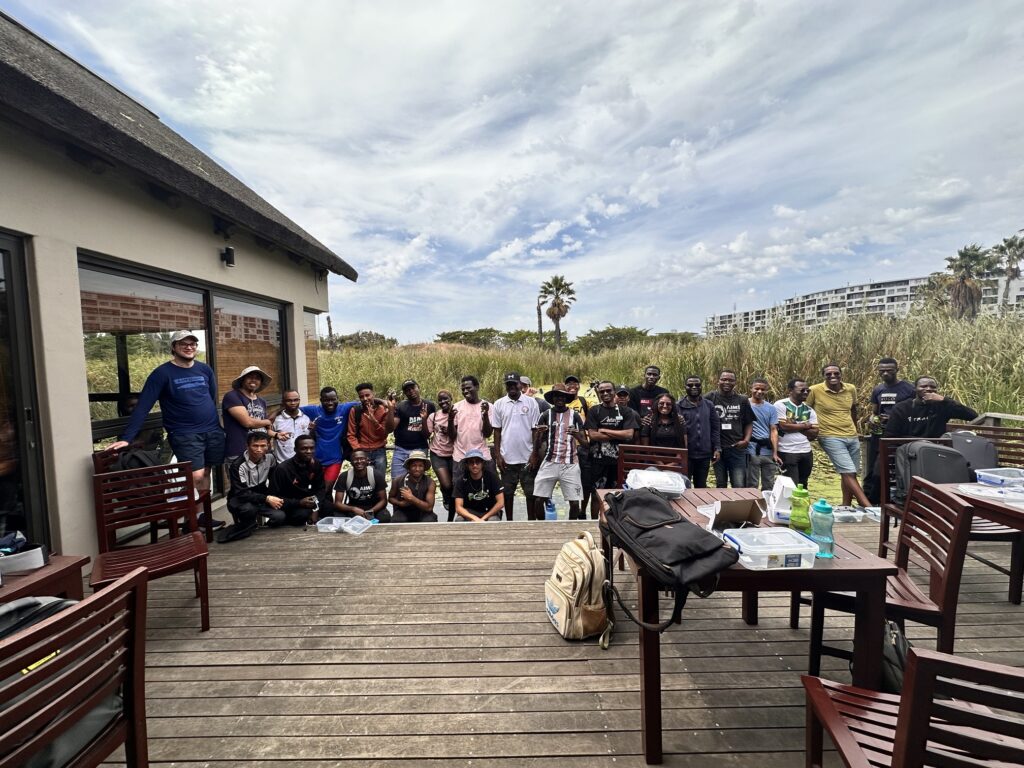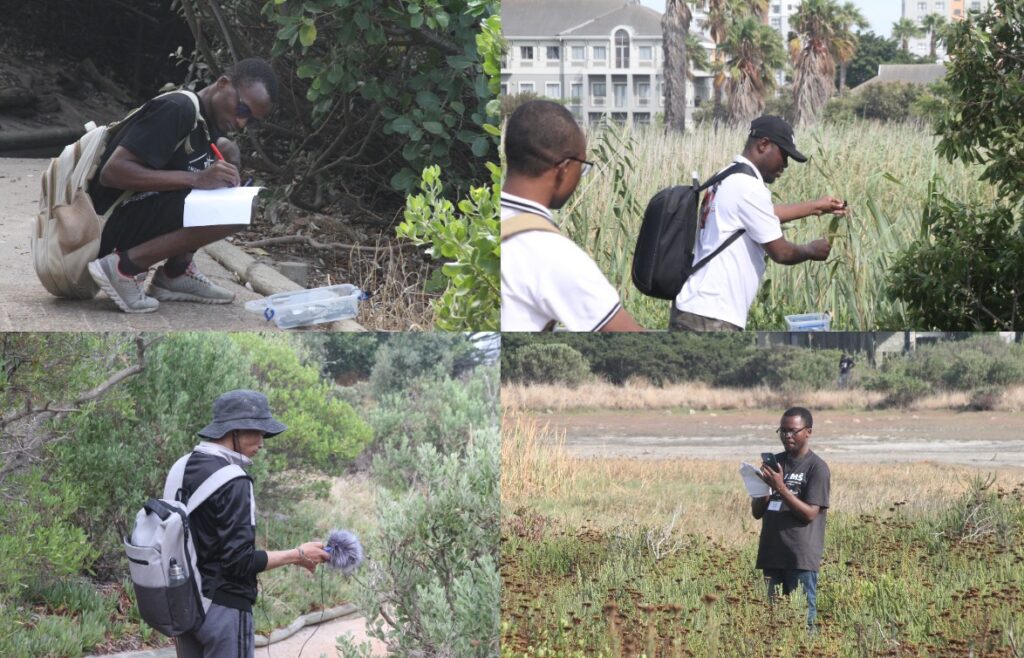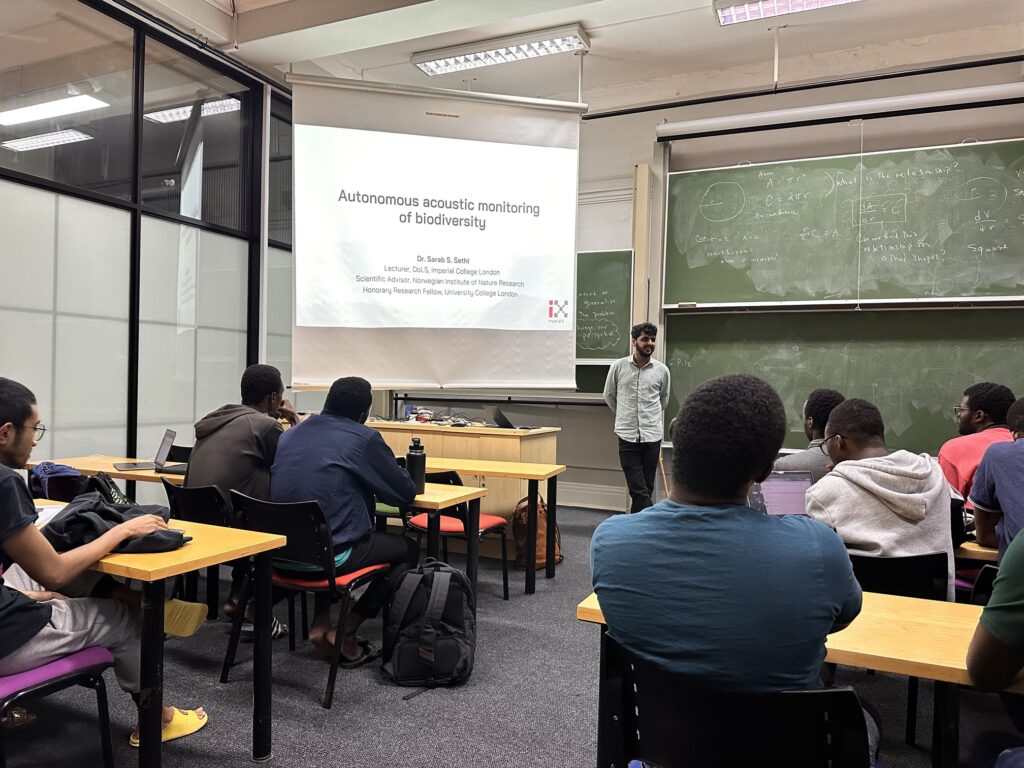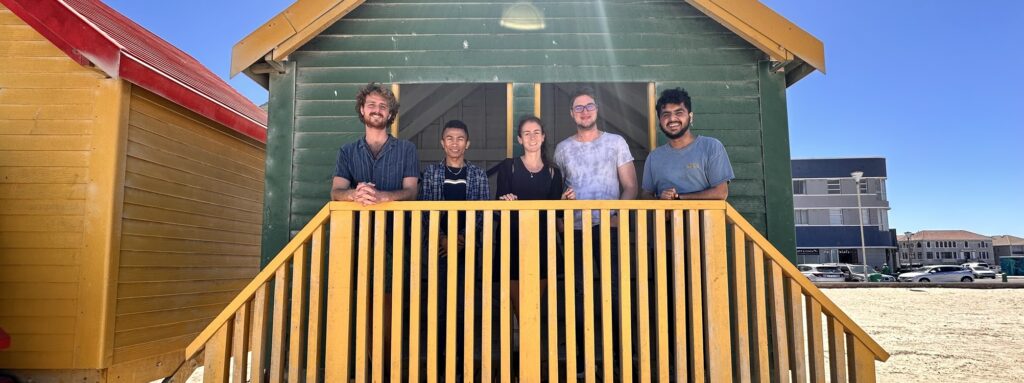The Machine Learning for Ecology Research group was involved in preparing and delivering a new course as part of the AI for Science AIMS South Africa’s Master’s degree. The course aimed at equipping the students with machine learning skills for bioacoustics, animal pose estimation, and bio-logging. Dr Dufourq covered machine learning for bioacoustics, which ranged from various mathematical concepts to advanced neural networks applied to animal sounds. Mr Van den Berg covered animal pose estimation and taught the students how to develop neural networks to detect posture key points from videos of the endangered African penguin. Dr Jeantet covered advanced neural networks to detect animal behaviours from accelerometry data obtained from bio-logging devices attached to sea turtles. After this course, the students would have worked with a lot of real-world data and problems, and are now ready to help with wildlife monitoring, and help our planet.


The students developed custom autonomous recording unit hardware and deployed their devices at the Intaka Island Nature Reserve, in Cape Town. The students created an open-source dataset consisting of 5 hours of manually verified audio soundscape data. Thereafter, they trained neural networks to detect the vocalisations of birds within the reserve.

Dr Sarab Sethi, who leads the Ecosystem Sensing Group at Imperial College London, presented a seminar titled “Fully autonomous eco-acoustic monitoring”. Dr Sethi visited the Machine Learning for Ecology Research group as part of an Imperial-AIMS Connect Partnership Fund where they will jointly collaborate on various on-going and new research projects.
Dr Dufourq was appointed as an Associate Editor for the Ecological Informatics journal. Two students within the group, Mr Dean Blackburn and Mr Donovan Broughton have successfully completed their M.Eng research projects, both with distinctions.
Dr Jeantet is a co-author on a new article in Biological Conservation titled “Demography of endangered juvenile green turtles in face of environmental changes: 10 years of capture-mark-recapture efforts in Martinique”. She actively participated in all the capture-mark-recapture campaigns between 2018 and 2021 as part of her Ph.D. research. These campaigns involved intensive fieldwork lasting a week, aimed at surveying the population of immature green turtles in the bays of Martinique; Anses d’Arlet, French Caribbean Islands, helped by a team of skilled freedivers to capture the turtles. Once captured, they identified them using Passive Integrated Transponder, assessed their physical condition and health status, and then released them back into their natural habitat. These findings suggest that the degradation of native seagrass habitats due to factors such as boat anchoring, pollution, and the proliferation of invasive species could jeopardise the ability of Martinique’s feeding grounds to support the complete development phase of green turtles.

